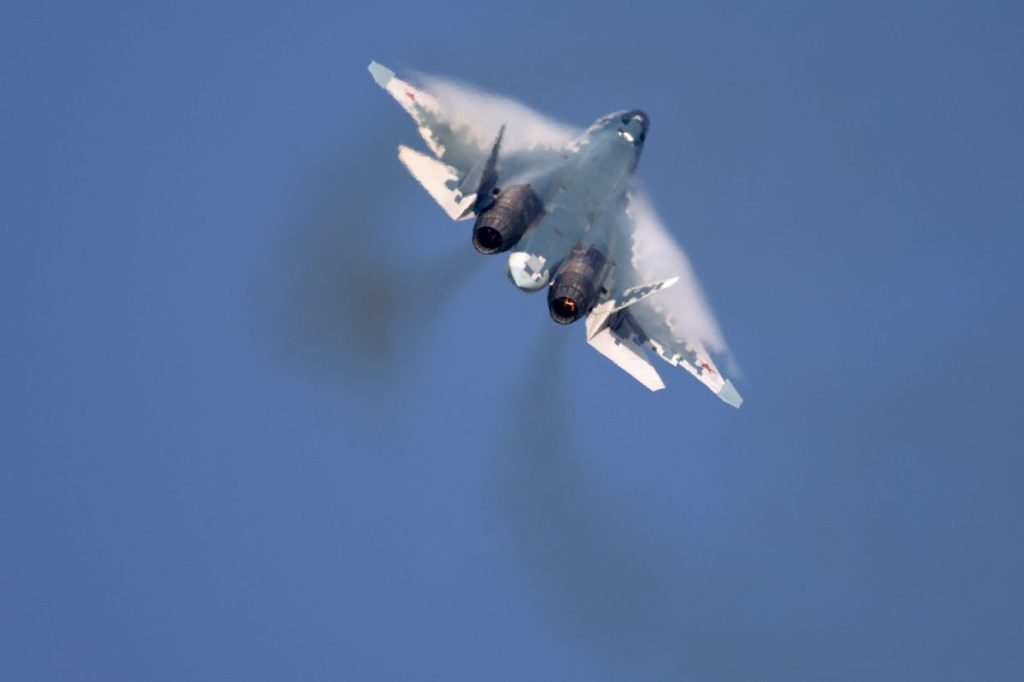Russia Offers to Manufacture Su-57 Stealth Fighter for Indian Air Force
Russia has extended an offer to manufacture its fifth-generation Su-57 stealth fighter jet for the Indian Air Force, as reported by Reuters on February 11. According to two official sources, the fighter jets would be produced in India, and discussions are underway between Russian state arms exporter Rosoboronexport and Indian government officials from the state-owned Hindustan Aeronautics. A spokesperson for Rosoboronexport confirmed that production could commence as early as this year if India agrees to the deal. Russia has long been India’s largest arms supplier, although sanctions on Russia following its full-scale invasion of Ukraine have pushed India to diversify its weapons supplies from Western countries. Despite the Su-57’s reputation for mechanical issues and its designation by some experts as the "worst of the world’s stealth fighters," the offer aligns with Prime Minister Narendra Modi’s strategy to enhance defense spending and production amid ongoing tensions with Pakistan and China.
Historical Context and Technical Challenges of the Su-57
The Su-57, Russia’s most advanced fighter jet, has faced significant criticism and technical challenges. The first non-prototype version crashed during a test flight in December 2019, raising questions about its reliability. This incident, coupled with the aircraft’s performance issues, has led some experts to dub it the "worst of the world’s stealth fighters." In June 2024, the situation worsened when Ukrainian forces reportedly struck the Akhtubinsk airfield, damaging Russian versions of the Su-57. Despite these setbacks, the Indian Ministry of Defense remains interested in the aircraft, likely due to the strategic importance of the Indo-Russian relationship and the need to bolster its air force capabilities. India previously withdrew from a project to co-develop and produce the Su-57 with Russia, but the new offer could revitalize interest, especially if production and technical support are assured.
Deepening Economic and Defense Ties Between India and Russia
While India has maintained a call for a diplomatic resolution to Russia’s war against Ukraine, it continues to deepen economic and defense ties with Moscow. In July, Prime Minister Narendra Modi met Russian President Vladimir Putin in Moscow, and the two leaders identified nine areas for enhanced cooperation, including nuclear energy, medicine, and defense. This meeting underscored the strategic importance of the Indo-Russian partnership, particularly in the face of regional challenges. India and Russia also aim to boost bilateral trade by over 50%, targeting an annual trade volume of $100 billion by 2030. This ambitious goal is a testament to the robust economic relationship between the two nations, which is likely to be further strengthened by the defense agreements and joint production initiatives.
Landmark Energy Partnership Between India and Russia
In December 2024, Russian state-owned oil company Rosneft and Indian refining giant Reliance Industries finalized a landmark agreement to supply 500,000 barrels of oil daily for the next 10 years. This deal marks the largest energy partnership between India and Russia, highlighting the mutual economic benefits and strategic importance of their relationship. The agreement is expected to enhance India’s energy security and reduce its dependence on other suppliers, while providing Russia with a stable and significant market for its oil exports. This partnership is a significant milestone in the Indo-Russian economic relationship and is likely to serve as a foundation for future collaborations in various sectors.
Ukraine War Developments and Global Implications
Recent developments in the Ukraine war have added a layer of complexity to international relations. Ukrainian President Volodymyr Zelensky has suggested that Ukraine might trade territory in potential peace talks with Russia, a controversial but pragmatic move to end the conflict. Ukrainian forces have also struck Russia’s Saratov oil refinery, confirmed by the Russian military, further escalating the conflict. The United States has reiterated its stance that it will not send troops to Ukraine, underlining the limitations of Western military involvement. North Korea’s reported supply of 200 long-range artillery guns to Russia adds another dimension to the conflict, raising concerns about the proliferation of advanced weapons in the region. These developments highlight the intricate geopolitical dynamics and the far-reaching consequences of the Ukraine war.
Strategic Considerations for India in the Indo-Pacific
In the broader context of the Indo-Pacific region, India’s strategic considerations are multifaceted. The deepening ties with Russia, despite international sanctions, reflect India’s balancing act between its diplomatic principles and its practical security needs. The offer to produce the Su-57 in India is not just about acquiring advanced military hardware; it also signifies India’s commitment to strengthening its defense industrial capabilities. This move aligns with Prime Minister Modi’s "Make in India" initiative, aiming to transform India into a global manufacturing hub. However, India must also navigate the complex geopolitical landscape, balancing its relationships with Russia, the United States, and other partners. The strategic partnership with Russia, while crucial, must be managed carefully to avoid diplomatic tensions and ensure long-term stability in the region.












